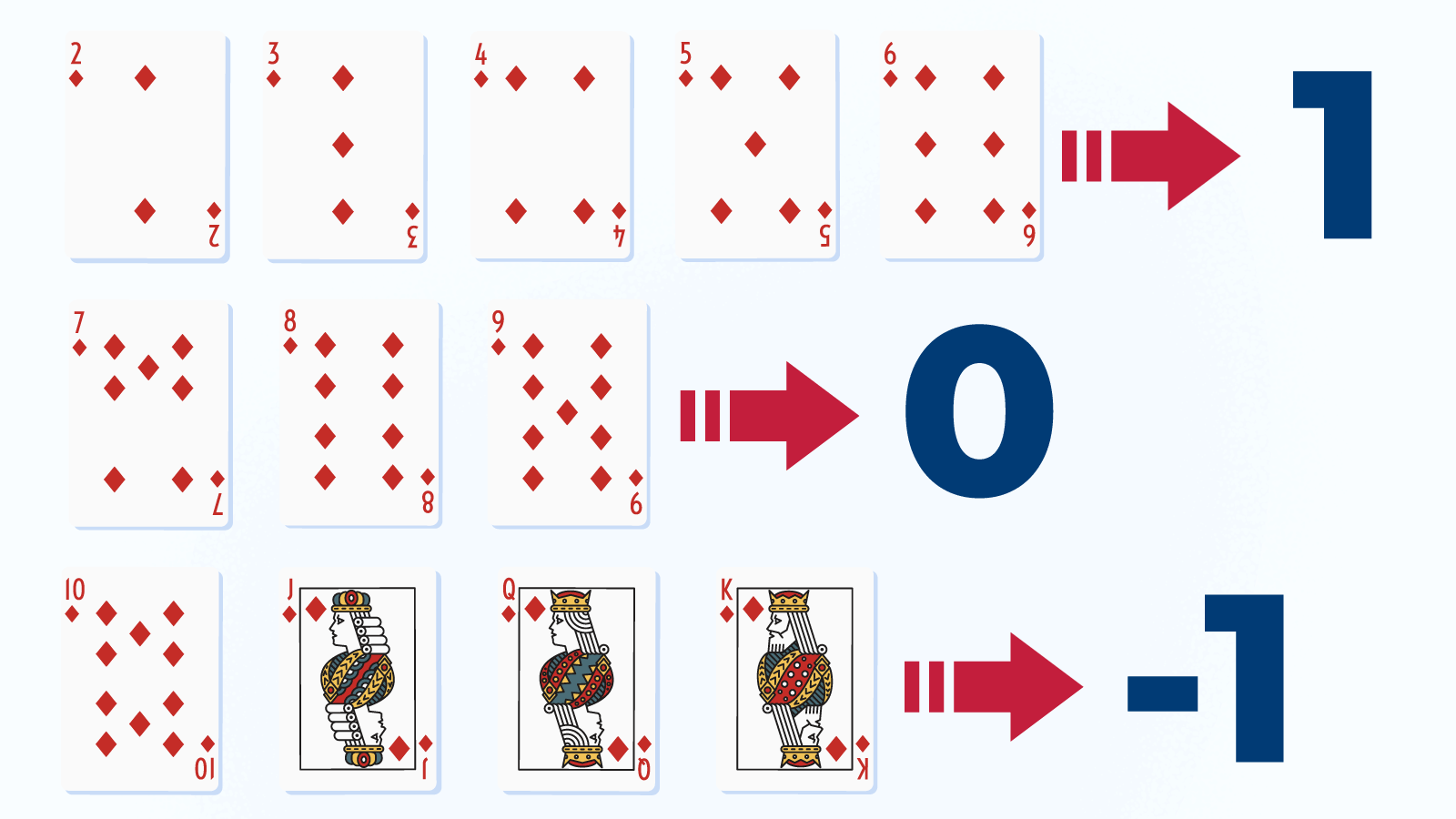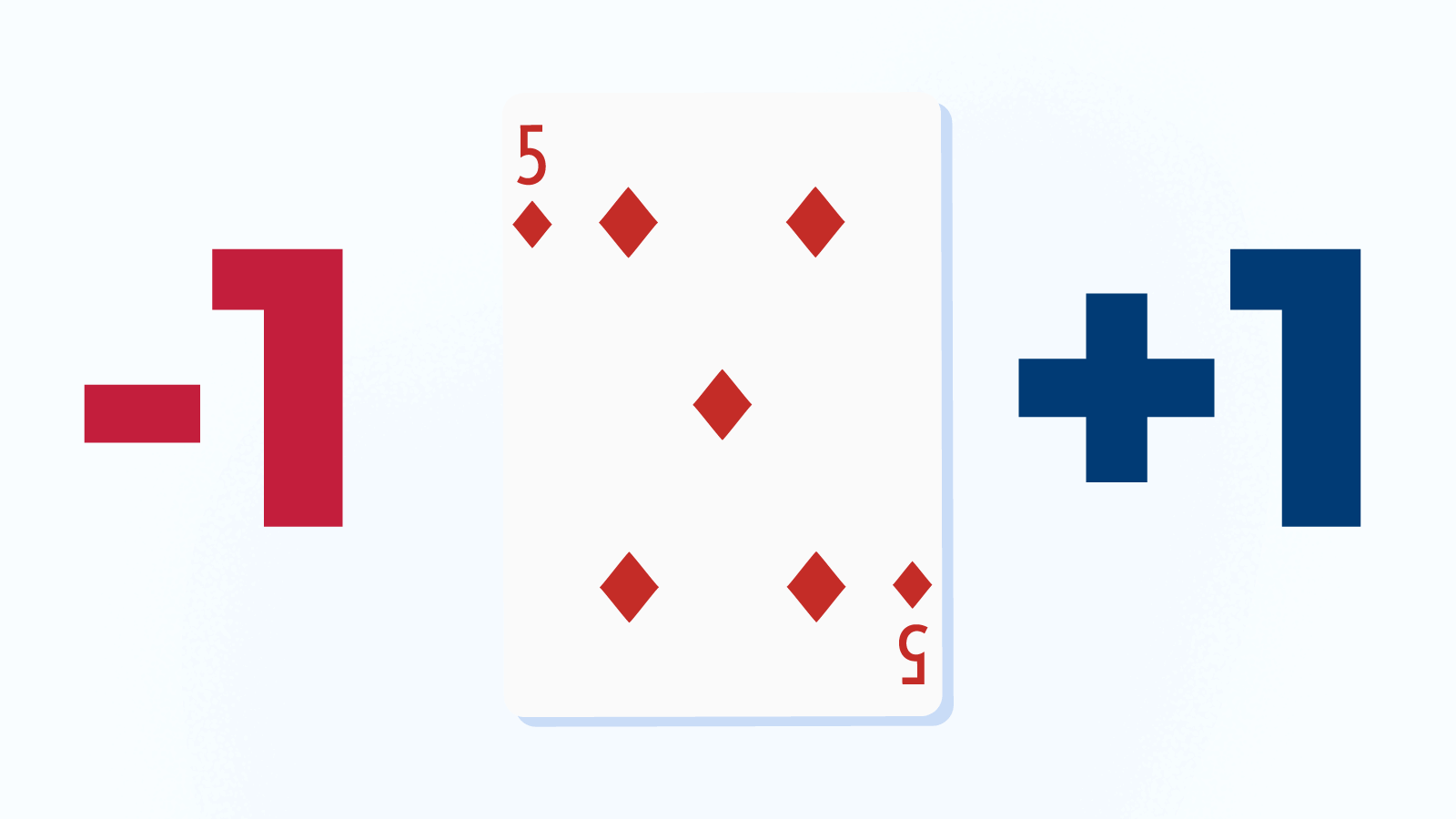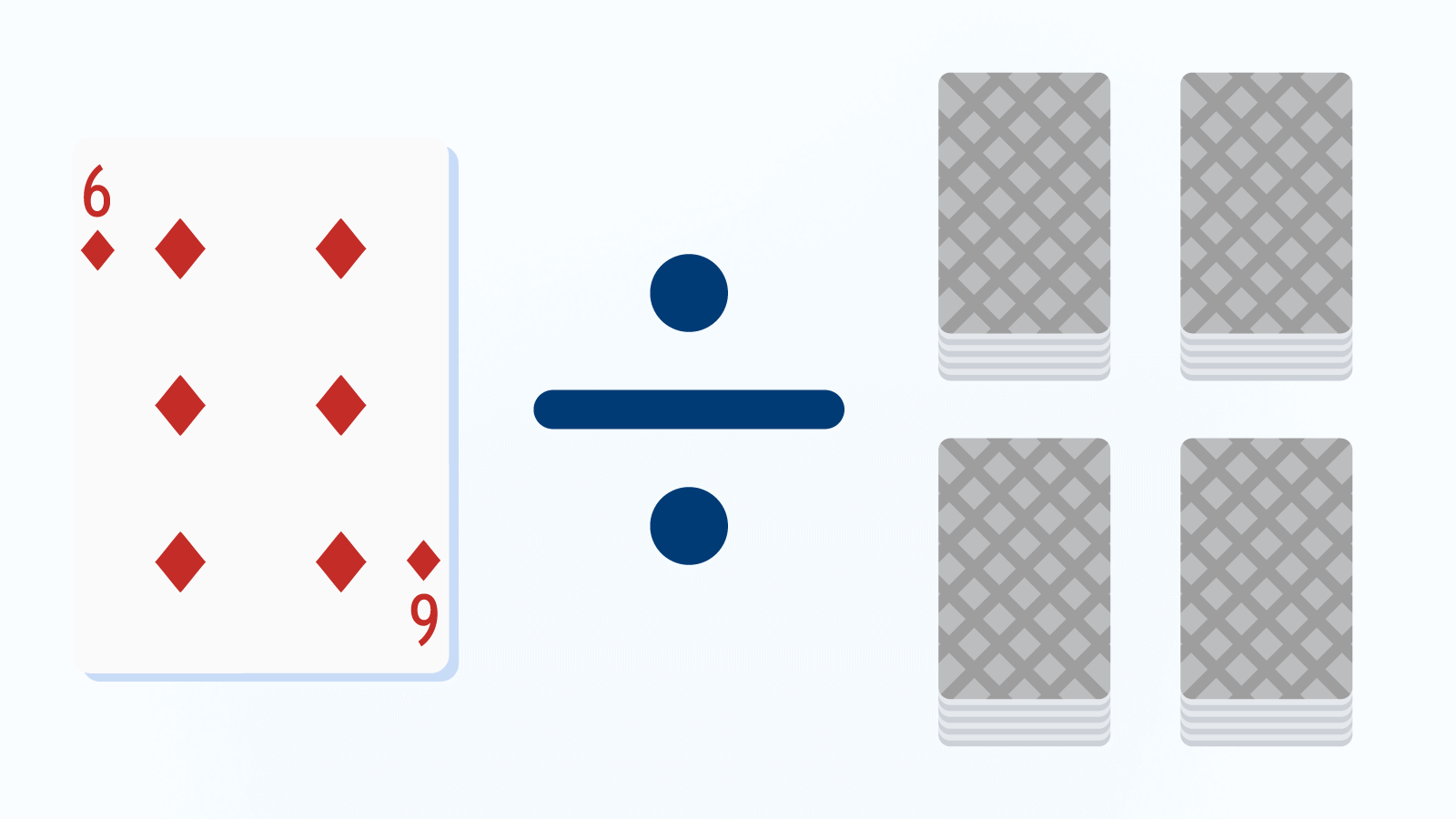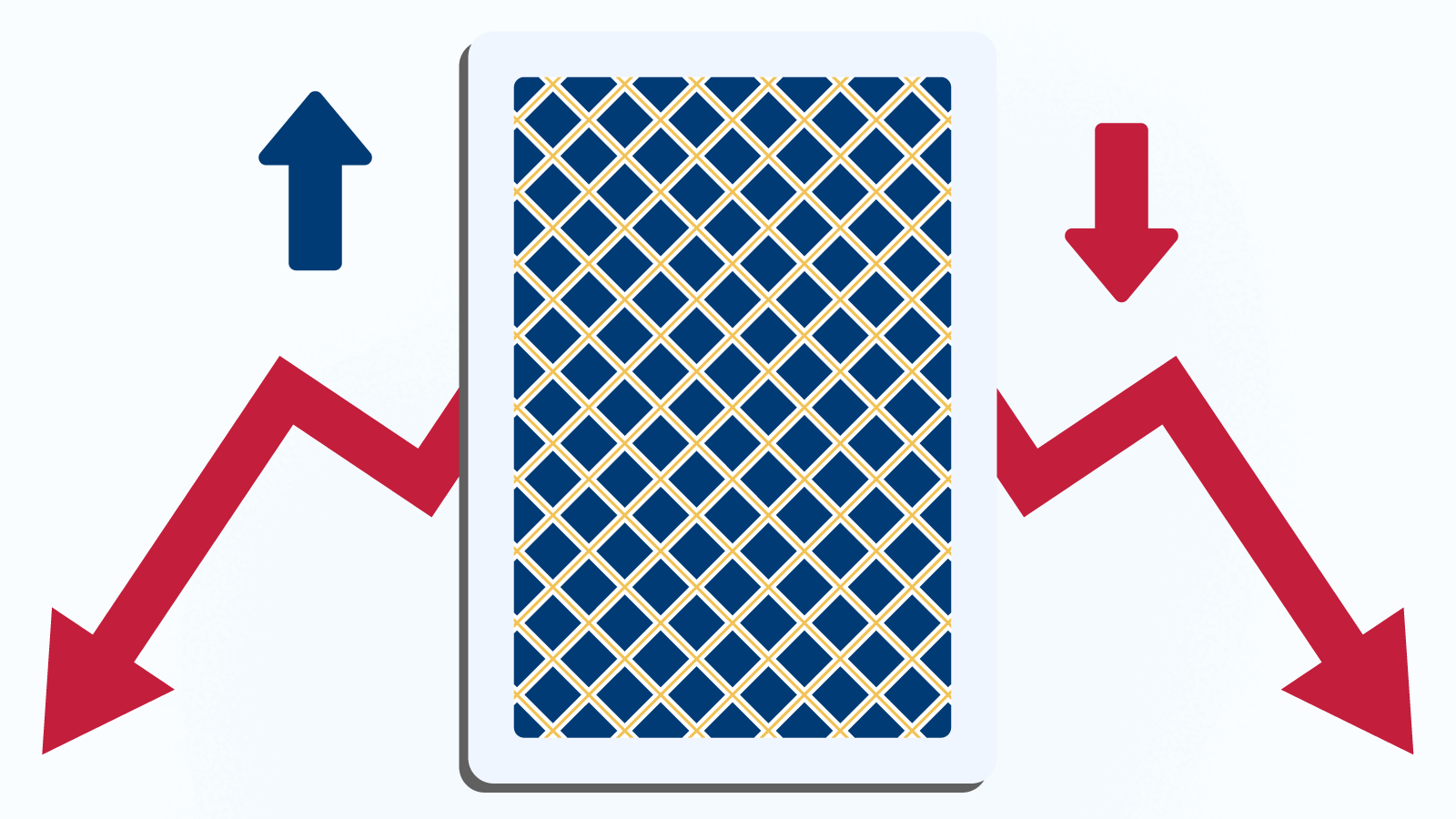The Art of High Low Card Counting In Blackjack
KingCasinoBonus receives money from casino operators every time someone clicks on our links, influencing product placement. The compensation we receive does not impact our recommendation, advice, reviews and analysis in any way. Our content will always remain objective, independent, straightforward, and free from bias.

Feel that card counting should be in the hall of fame of forbidden casino tactics? Think it over again.
Contrary to popular belief, UK players, like one of our experts, Alexandra Camelia Dedu, still covertly turn over odds in modern times. If you want to properly influence the odds in your favor, this guide will show you how to use basic high/low counting techniques that don’t require supercomputer brains.
On this page
Understanding the Basics

If you’ve mastered the basics of playing blackjack, it is only natural to want to keep improving your strategy and methods to beat the house. Counting cards is one strategy players can use.
Blackjack has generated multiple counting systems, but none so practised and practical as the high-low (hi-lo) system.
Learning to count cards using this system can give you a slight edge over your dealer and allow you to make smarter bets.
Keep in mind that our article will give a general overview of how the high-low counting system works at the blackjack table in brick-and-mortar establishments and on blackjack bonus games found in UK online casino sites.
High-low card counting has not so much to do with remembering how many cards of a particular value are left in the shoe but rather with keeping tabs on the high-value cards, i.e. honour cards – J, Q, K, A, and 10s.
Eventually, if the count is correct, you will know whether the ratio of high-to-low cards remaining in the shoe is in your favour.
It is essential to begin your ‘running count’ with the start of the deck, as it would be much more challenging to keep an accurate count if you sit with one or more decks of cards already drawn from the shoe.
As the name suggests, the high-low counting system also centres on keeping track of high and low-value cards in a multi-deck blackjack game.
The system works by assigning point values to card sets. With this system, you divide cards in a deck (2 through A) into three sets: low cards, neutral cards, and high cards.
Low cards are assigned a point value of +1, neutral cards a point value of 0, and high cards a point value of -1.
For the system to work, you must observe every card the dealer pulls from the shoe. High-low is a balanced system of counting cards, as there are 20 cards with a +1 point value and 20 with a -1 point value in a single deck.
Keep in mind that it is common for online casinos and land-based operators to ban players found card counting permanently. Hence, this strategy would be rather more helpful for playing games with friends and not inside real money sites.
Implementing the Strategy

Counting cards with the high-low system rests upon adding and subtracting 1, depending on the type of card the dealer draws.
You always start your count at 0, and, to reiterate, it is vital to begin the running count at the very start of the game when no cards have yet been drawn from the decks
Failing to count one card, let alone more, can throw the count off balance and lead to a faulty calculation.
The adding and subtracting are conducted based on the cards’ assigned point value
| Cards | Point Value |
|---|---|
| Low cards (2, 3, 4, 5, and 6) | +1 |
| Neutral cards (7,8 and 9) | 0 |
| High cards (10, J, Q, K, and A) | +1 |
Each time a dealer draws from the shoe, you add or take 1, or don’t do anything if the dealer draws a non-counting card (7, 8, or 9).
Counting the cards based on their assigned value falls within the ‘running count.’
Example:
For instance, if the initial 10 cards the dealer draws are 2, 6, J, 8, J, K, 7, 4, 5, and 3, the running count in this instance is 1+1-1+0-1-1+0+1+1+1, which equals 2.
Advanced Techniques and Raising the Bets

In the example above, 2 is the ‘running count’ number. Next, you should convert it to the ‘true count.’
To conduct the conversion, divide 2 by how many decks are left in the shoe. This is a key reason why it is recommended to start playing from the beginning, i.e. to stay on track with the number of cards and decks left in the shoe.
The running count is converted to the true count only when the game involves multiple decks. In single-deck games, the running count indicates the value of the remaining deck.
Moreover, the true count will tell you whether or not you have the edge over the house and how big that edge is.
If, for instance, the running count is 6, and you estimate there are about four decks left, you divide 6 by 4, which is 1.5.
The rule of the High-low system is that you get an advantage (edge) over the house if the true count is 2 or more. With a higher true count, you’ll get a higher edge. It also goes the other way around – if the running count starts dropping, the advantage shifts in favour of the house.
As you keep counting, you will have a better idea about placing the appropriate bets (provided your count is accurate).
Naturally, you’d want to make a bet when there is a positive count and the edge is in your favour. It is also advisable to personally decide on an amount of money by which you will increase your bet when the moment is right.
For example, if you start with a bet of £20 when the true count is +2, you make £40 if the count is +3, a £60 wager when the count is +4, and so on. You can double, triple, or quadruple your bet or place a bet considerably larger than the one consistent with this betting method.
Potential Pitfalls of the Hi-Lo Counting System

As you can see from the section above, you decide on your bet amount and type based on the true count. You can place a more significant wager if you have a higher true count. You essentially determine your betting unit and multiply it by the actual count.
So, if you decide on a £10 base betting unit, you should bet £30 if the true count is +3, £40 if the true count is +4, and so on.
However, it is paramount that you master this counting technique as croupiers, pit bosses, and other casino managers overseeing the gaming tables are fully aware of the risks of card counters.
Raising or decreasing your wager based on the true count will show a pattern of betting tied to card counting that is bound to get noticed. The casino can then take appropriate measures to sanction such practices.
The hi-lo system is unnecessary in single-deck games for reasons already cited. It is also ineffective if the decks are shuffled ahead of every hand – a safeguard employed by online casinos and some brick-and-mortar casinos.
Keep practising!
Hi-lo can be a precious tool for blackjack players, so it would be best if you will master it. The method’s popularity is due to its simplicity and efficiency in increasing players’ Blackjack odds of earning.
However, using the strategy correctly requires practice and patience. In addition to getting the real value of the card you receive, you would also need to know how to swiftly divide the running count by the number of decks remaining.
This is where practice comes in, given that you must avoid any sign that could indicate to the casino that you are engaged in card counting.